Table of contents
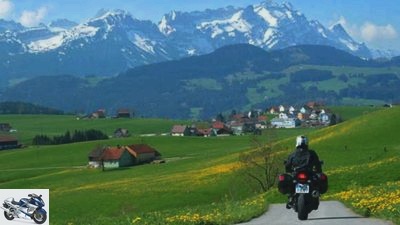
Hinwiler
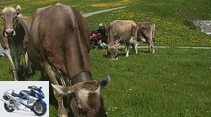
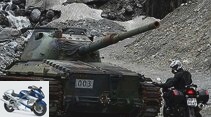
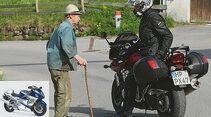

52 pictures
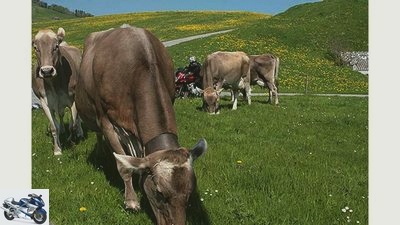
Breakable
1/52
Meeting on the outskirts of Appenzell.
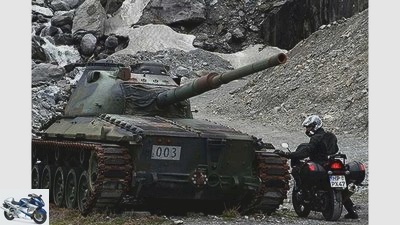
Breakable
2/52
Tank maintenance workshop near Elm.
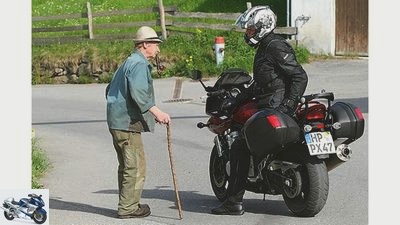
Breakable
3/52
Ask about the right path at Lake Walen.
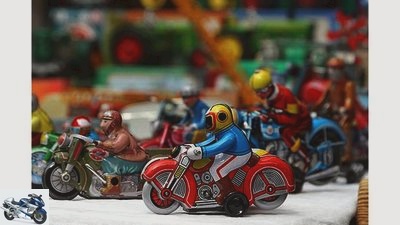
Breakable
4/52
Toy motorcycles on a flea market in Glarus.
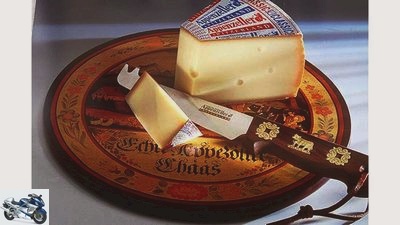
Breakable
5/52
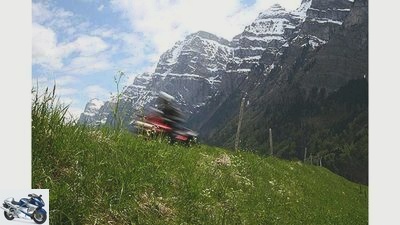
Breakable
6/52
Curve fun in the Klontal.
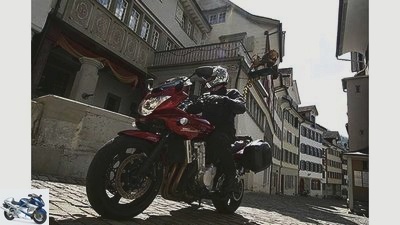
Breakable
7/52
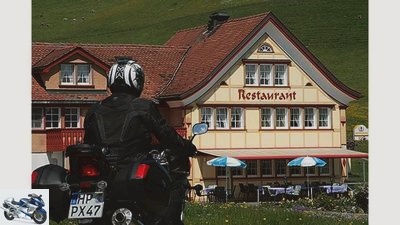
Breakable
8/52
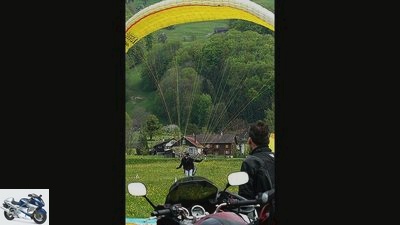
Breakable
9/52
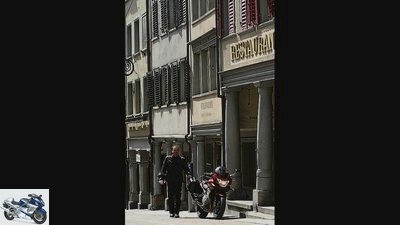
Breakable
10/52
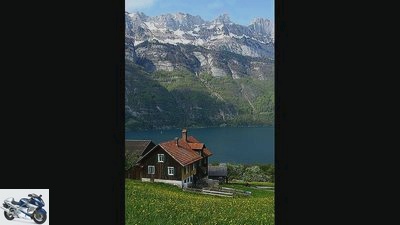
Breakable
11/52
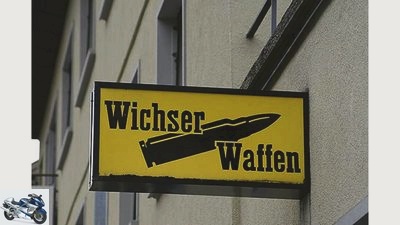
Breakable
12/52
Serious business in Glarus.
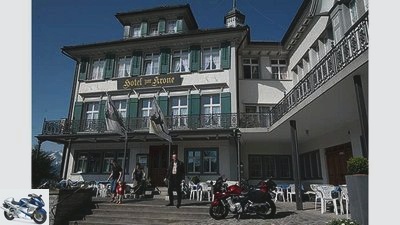
Breakable
13/52
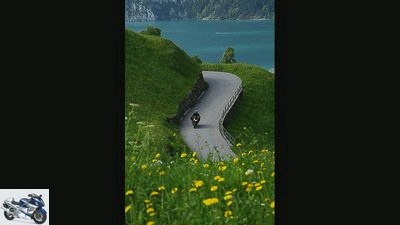
Breakable
14/52
Fantastic coastal road on the Walensee.
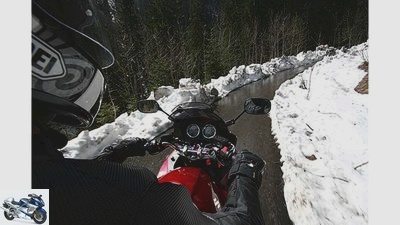
Breakable
15/52
There is still snow at the end of the Klontal.
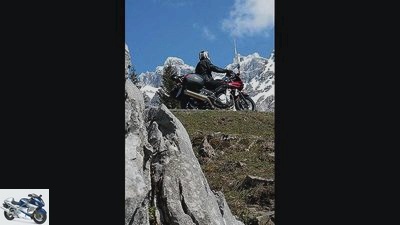
Breakable
16/52
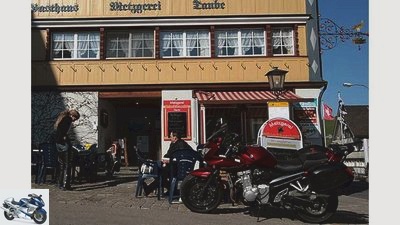
Breakable
17/52
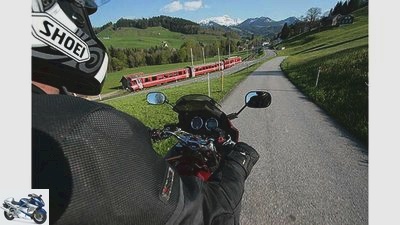
Breakable
18/52
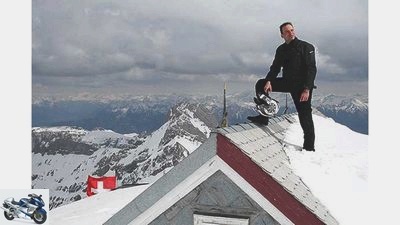
Breakable
19/52
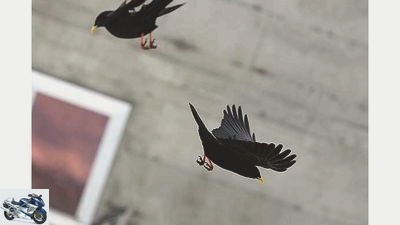
Breakable
20/52
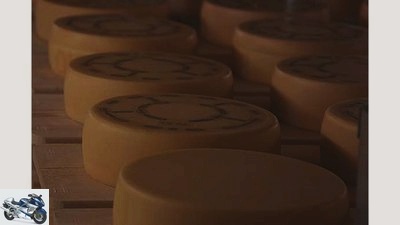
Breakable
21/52
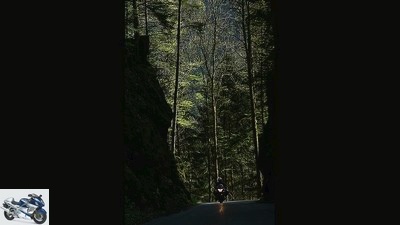
Breakable
22/52
Gorge on the way to Obersee in the Glarner Land.
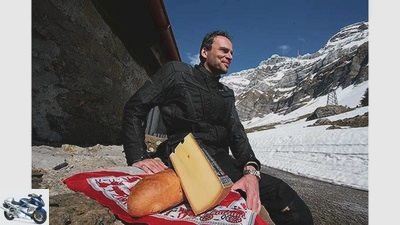
Breakable
23/52
Break at the foot of the Santis, fresh Appenzeller shortly before consumption.
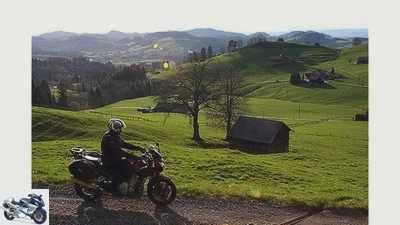
Breakable
24/52

Breakable
25/52
The Obersee in the Glarner Land lies like on the first day of creation.
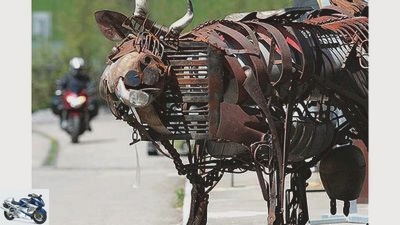
Breakable
26/52
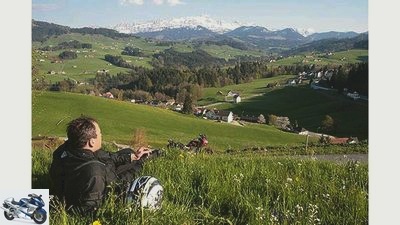
Breakable
27/52
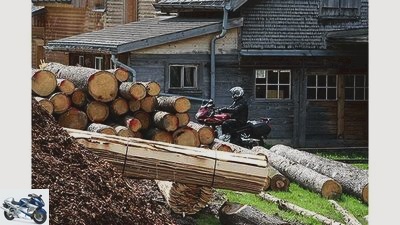
Breakable
28/52
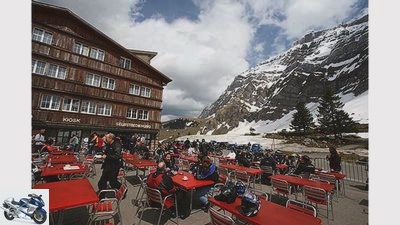
Breakable
29/52
Bikers’ meeting at the foot of the Santis.
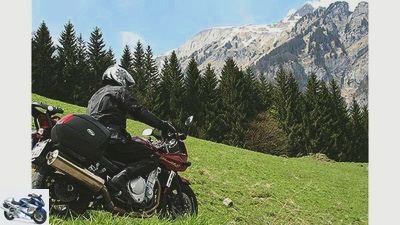
Breakable
30/52

Breakable
31/52
In front of the show dairy in Stein.
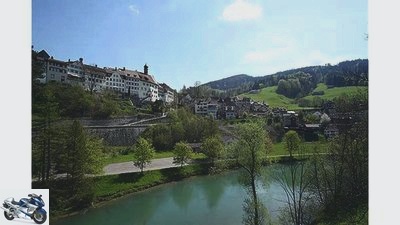
Breakable
32/52
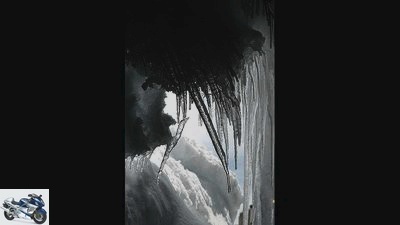
Breakable
33/52

Breakable
34/52

Breakable
35/52
Switzerland folklore in the village of Appenzell.

Breakable
36/52
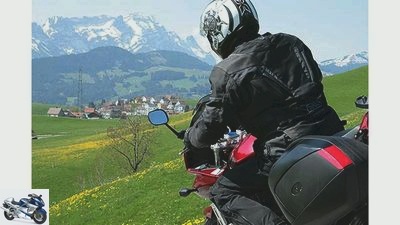
Breakable
37/52
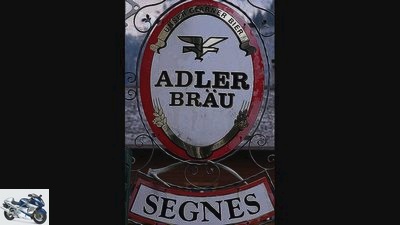
Breakable
38/52
Regional beer in Glarus.
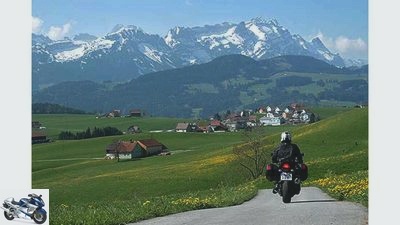
Breakable
39/52
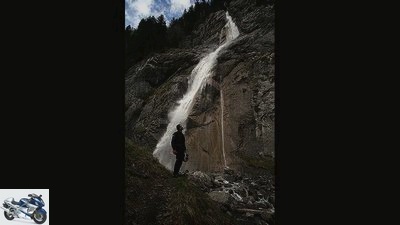
Breakable
40/52
Waterfall in the Klontal.
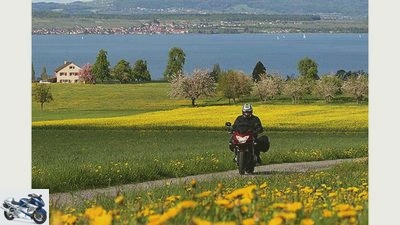
Breakable
41/52

Breakable
42/52

Breakable
43/52
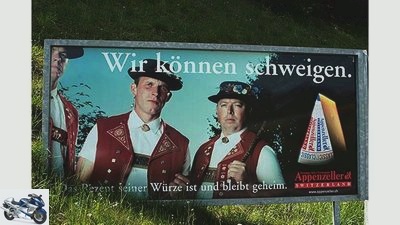
Breakable
44/52
Advertisement for Appenzeller cheese, the recipe of which is top secret.
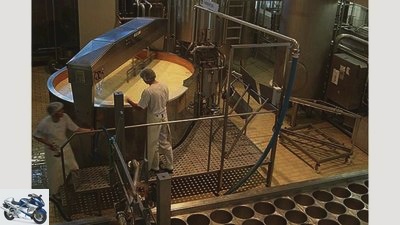
Breakable
45/52

Breakable
46/52

Breakable
47/52

Breakable
48/52
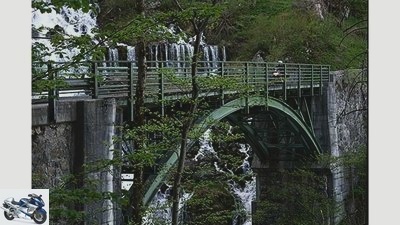
Breakable
49/52
Bridge over waterfall on the way to Obersee.

Breakable
50/52
View of the Walensee and the Churfirsten chain.
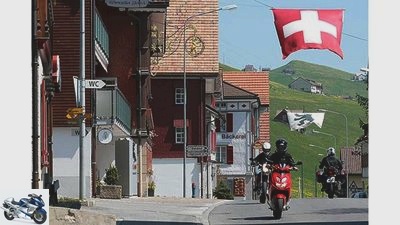
Breakable
51/52
Two-wheeler traffic in Gonten on the way to Urnasch.

Breakable
52/52
to travel
Northern Switzerland
Northern Switzerland
Hash browns & Rutli
Switzerland is a fascinating social and cultural experiment. In addition, slalom roads curl in beguiling landscapes. Driving pleasure is guaranteed even in the less touristy northeast, such as in the cantons of Appenzell and Glarus or in Toggenburg, which is part of Sankt Gallen.
Markus Biebricher
08/01/2008
The four-cylinder purrs gently, the destination has been obvious for a hundred kilometers. It is enthroned as a huge, white powdered stone sculpture above a green toy landscape. The mountain magically draws attention away from the road, although the already jagged and steep sections show that you can feel G-forces. We’re not talking about Mount Fuji or Mount Kilimanjaro, we’re talking about Santis, which not only dominates the Appenzell region, but almost all of north-east Switzerland. Even if it is not one of the 74 four-thousand-meter peaks in Switzerland, at 2501.9 meters it is the absolute boss in the Alpstein Mountains and is so exposed that there are weather conditions on it that can only be described as extreme: In April 1999, a snow depth was measured of 816 centimeters.
Before Urs and I venture into the meteorological hell of Everest von Appenzell, we accept the invitation of the green hills spreading in front of it to surf the narrow asphalt strips and enjoy views that move every fan of a model railway world to tears should. Individual farmsteads pass by, each guarded by the Appenzeller Sennenhund, which is not as big, but prettier than a St. Bernard. It is absolutely peaceful up here, the world seems at gaps, life is a tranquil river as the seasons change. Stopping, drinking an Ovaltine in a “pub”, listening to the crackling engine as it cools down and the local drinkers playing “jazz” (card game) are all part of the spice of every Appenzell tour. Just like the permanently present tinkling of the cowbells, whose chewing wearers lay the foundation for the famous cheese production in lush meadows.
You can experience them live in the show dairy in Stein. Every day 9,000 liters of unpasteurized quality milk are processed there in a meticulously coordinated process into a cheese whose delicious taste is one of the highlights of the cheese world. This is also supported by the fact that an old BMW from Ostholstein is parked next to the bandit, the driver of which chose the route via Stein in Appenzell in order to stock up on fresh stomachs and saddlebags on the way to Italy
Whip cheese full.
We also bunker the delicious product and once again follow the invitation of numerous mini-streets in Appenzell, which is the only federal canton that is completely enclosed by another canton (St. Gallen). Appenzell is divided into two half-cantons, which were created in 1597 by a democratic referendum in the religious communities: the Protestant Reformed Appenzell Ausserrhoden and the Roman Catholic Appenzell Innerrhoden. In the latter, non-slip asphalt leads in wide sweeps from Stein to the village of Appenzell, where brightly painted wooden houses characterize the townscape.
Traditions determine what happens in people’s minds. So-called Landsgemeinde elections are held every year at the end of April. The people of Innerrhoden meet on the village square of Appenzell and bring their side gun with them as voting ID. The men from Ausserrhoden alternately meet with their swords in Trogen, a town with 1950 residents, the seat of the cantonal court, or in Hundwil, a picturesque nest of 1,000 souls. Because women’s suffrage was only introduced in 1990 and the validity of the Julian calendar has still not been abolished, the local Appenzell people are said to have a certain persistence, which one could simply call stubbornness.
Buy complete article

Northern Switzerland
Hash browns & Rutli
11 pages) as PDF
€ 2.00
Buy now
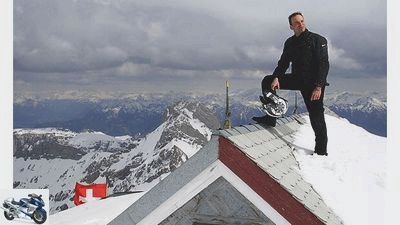
Hinwiler
De Santis is the Everest of Appenzell.
We don’t feel any of this today, on the contrary, the people turn out to be warm and helpful. As we roll into a courtyard looking for a place to stay, the lady of the house tells us that we had to give up farming and that we would now like to convert the picturesque barn into a residential building. Merciless monument protection regulations, which nobody could afford to comply with, thwarted the request. Everything would fall apart, tradition would come into serious conflict with the present. Europe is circling Switzerland more and more. We hear from many people in Appenzell only a generation earlier that everything was still in order. Ten children lived in one room. The farmer father, the housewife mother, life in the rhythm of the seasons. Everyone had their job. Livestock and land ownership meant wealth. There was no time to perceive the world outside. Consciousness lingered between mountain walls. Whether the Appenzell people even noticed the difficult role Switzerland played in the wars, when raw materials were scarce and potatoes had to be planted on football pitches in the Central Plateau?
Back in the present, Appenzell surprises with the fact that there is an incredible amount to discover in such a small space. Chapels along the way, gurgling streams, birds of prey, humpbacked herdsmen, friendly dogs, breathtaking views, flora and fauna in top form. And that it’s fun to drive the same routes twice, to discover different perspectives again and again. With due consideration, of course. Appenzell, the motorcycle hiking region. So we zoom in via Steinegg and Weissbad to the foot of the Ebenalp or surf via Schlatt and Haslen to Teufen, enjoy the route from Appenzell via Gonten to Urnasch or from there to Waldstatt.
Urnasch, the largest and oldest municipality in Appenzell-Ausserrhoden with 2300 inhabitants, is the starting point of our journey towards Santis, which is long overdue. We tackle the 1278 meter high Schwagalp, located at the foot of the Santis, and whiz around the curves until the rests scratch. Hundreds of motorbikes are parked at the top of the pass, their drivers sit in front of the cable car station and celebrate the bends and the sublime Santis.
If we had hiking boots, we would deserve its summit. Five hours, that’s how long it takes, I think I can remember, because our journey is slowly becoming an excursion into my own past. In contrast to my companion Urs, I have been here before, for years in the summer months I made money for living and studying in a textile factory nearby. Back then I was walking on the Santis, today I take the cable car with Urs and other tourists. The panorama above is overwhelming, we see six countries: Germany, Austria, Liechtenstein, France, Italy and of course Switzerland. Not to mention the main Alpine ridge, the glider pilots or the gifted alpine choughs. Bizarre how the wind shaped the masses of ice and snow up here. How lonely the weather stations must have felt, who had to survive the harsh winters alone on the summit from 1882 to the 1930s …
We don’t feel lonely as we whiz down the more demanding side of the Schwagalp towards Neu St. Johann into Toggenburg. One or the other Guzzi is sniffed, heartily moved Super Dukes and daringly angled Ducatis are let by. Hardly in the valley, we make our way uphill again via Bendel, Hemberg and Heiterswil to Wattwil, where I was the girl for everything in the largest textile printing plant in Eastern Switzerland. Today, instead of the proud factory, dusty fallow areas stretch along the road, the last ruins bear witness to the former textile finishing boom. The landlady from the Hotel Lowen next door has shrunk and has a hunched back, but she’s still managing the shop. The closure of the company almost drove them to ruin. But it was also a dirt thrower: on some days the river Thur, which flows through Wattwil and along the company premises, was red, on some yellow, on some blue, depending on what was produced in the dye works. That occurs to me again now, along with other bizarre stories of hot summers, the smell of hay and after-work races up Schwagalp, with old, lovable motorcycles. There was not only sunshine, but also stories of disharmony between Swiss and Germans.
I tell Urs about one of them: I come to my hotel from the late shift, check on my well-maintained Yamaha TR 1, which was parked in front of it. It’s gone – or at least not the way it was anymore. Lies on the floor in a clumped heap of metal, as if a tank had rolled over it. I ask in the neighborhood. Nobody saw or heard anything. I’m placing an ad in the local newspaper. After three weeks, an old lady reports the perpetrator, gives me his name and phone number. I confront him, a guy like a tree. He saw the German license plate in the headlights of his giant tractor and thought to himself, “This shitty car has to go”. Just drove over it. And why? “Because I don’t like Swabians.” “Swabians” is the synonym for all Germans in Toggenburg, even if they come from the coast. The perpetrator’s insurance paid for the current value, the incident had no legal consequences, the tractor driver’s father was a friend of the St. Gallen police chief. No further questions, Your Honor.
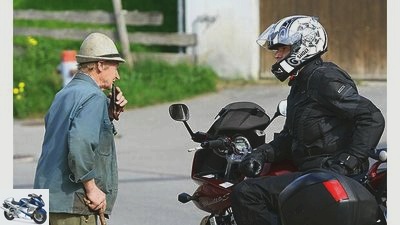
Hinwiler
The old farmer in Filbbach knows the way.
We bury them, the old stories, prefer to visit Lichtensteig, an old-fashioned town with its beautiful hooded houses, picturesquely situated above the right bank of the Thur. Then we rush over the Rickenpass to the banks of the Walensee, which nestles in a narrow valley to the south behind the Churfisten. We are not carried out of the many curves, but slowly but surely from our Appenzell history. We are magically drawn to the south and we drift over the mountains towards Glarus. Even in Toggenburg, the landscape has lost the loveliness it is used to from the Appenzell region, now it is becoming rougher and more extreme. The mountains get higher, the alpine lakes deeper, thundering snow avalanches slide down the steep slopes.
As at the beginning of creation, the Obersee lies at the end of a narrow, serpentine mountain road. Here we get a room for the night in a small hostel and enjoy the absolute silence and the elemental force of nature. The landscape is reminiscent of Yosemite National Park in the USA, frogs hop across the meadows and the last light leaks from the mountain peaks. The next day we steer the Bandit one valley further up to the Klontaler See and the Pragelpass until we get stuck in the snow (at the end of May) and have to turn back. Unwavering skiers come towards us, an elderly gentleman talks about a huge loaf of cheese that he heard at home. For years he has repeatedly cut pieces from him as travel provisions.
We cut the landscape in two on the narrowest asphalt and explore the Sernft valley to Elm and on to Wichlen, where a tank workshop and other military facilities urge people to turn back in front of huge rock faces. On the way back, when we take a break from paragliding on the Kerenzerberg above the Walensee, it crashes. No thunderstorms, no avalanches, but men who shoot targets with sharp weapons. A regular scenario as the Swiss have to do target practice on the weekends. After all, over 90 percent of the Swiss armed forces are conscripts and they have to stay fit. If you look closely in the cities, you will notice the permanent presence of the Swiss military, and if you want to know, you will find out that everyone who has achieved a position in social life also has a high rank in the military. We also climb up again and shimmy along the Walensee to Sargans, then on the mountain slopes over Buchs, Gams, Sennwald, Oberriet to Altstatten, where Stoss- and Ruppenpass beckon and our return to the loveliness of the Appenzeller Land.
As we rest on a sun-drenched slope, enjoy a piece of cheese and the view of the Santis, a Subaru station wagon comes up. A young woman leans out of the car and yells at us to leave the meadow immediately, otherwise the police will fetch her. Everything in Schwyzerdutsch, which luckily I can still understand. Now they come up again, the old stories. When I later told my old Swiss friend Paul, a soul of man and owner of an “office for utopias”, he said that the Swiss are different. Sometimes the chemistry with German travelers is not right. Unless they’re millionaires. These are the Swiss’ favorite foreigners. Is that different in Germany? There are also nagging women everywhere. So we ignored the lady and devoted ourselves to the sight of the Santis, which, despite these small-minded sensitivities, could only shine in the sunset and put a dignified cloud on its summit.
Info
Switzerland has given the world a lot. Cheese, watches, chocolate, Friedrich Durrenmatt and Heidi. She gave the motorcyclists daring curves. So let’s go there!
Travel time: 4 days
Distance covered: 800 kilometers
getting there
Appenzell and the neighboring regions to the south can be reached either via the A 81 towards Singen / Konstanz and St. Gallen / Herisau / Gossau or via the A 7 towards Memmingen / Bregenz and St. Margarethen.
traffic
The fine streets of Eastern Switzerland seduce you to a brisk pace, but the law enforcement officers know no mercy and demand hefty fines (twelve km / h too much cost 158 euros, for example). The use of the Swiss motorways requires the purchase and affixing of a vignette, which currently costs 25 euros, is available from Internet providers, the ADAC, at borders, petrol stations and rest stops and is valid for one year. Anyone caught without a vignette pays a fine of around 100 francs plus the cost of a vignette.
accommodation
The range of hotels and pensions is large, but decent double rooms under 60 francs are difficult to find. The offer becomes interesting from around 80 francs. We had good experiences with the Hotel zur Krone, Dorfplatz 6, CH-9056 Gais, phone 0041/71/7900690, www.krone-gais.ch, tasty food, nice hosts (double room 80 francs). The same applies to the mountain hotel Obersee, located in the middle of unspoilt nature, phone 0041/55/6121073 (double room 80 francs). Camping enthusiasts will also find what they are looking for. For example in the country inn and camping Eischen, Kau, CH-9050-Appenzell, phone 0041/71/7875030. More information at www.rentocamp.at/campingplaetze-ostschweiz.htm or www.camping-guide.ch.
money
The federal currency is known to be the stable Swiss franc. At the moment you get around 1.62 francs for one euro. The Swiss are not averse to the euro, they accept it in areas with more tourist traffic, but a smaller amount in francs doesn’t do any harm, because machines are not set up for euro payments.
Appenzell cheese
Appenzeller is produced in the cantons of Appenzell Innerrhoden and Ausserrhoden. The loaf weighs between six and eight kilograms and is 30 to 33 centimeters in diameter. Appenzeller can be recognized by its yellow to reddish brown bark and the regular, medium-sized perforations. The ripening loaves must be turned regularly and washed with salt water. The cheese gets its characteristic flavor from the treatment with herbal brine, a carefully guarded, centuries-old recipe. You can get an insight into the art of cheese in the show dairy in Stein. Here you look directly into the 6000 liter kettle in which the milk is prepared and the cheese harp is pulled through the thickened mass. Open from April to October daily from 8.30 a.m. to 6.30 p.m. and from November to March daily from 8.30 a.m. to 5.30 p.m. Cheese sales and a restaurant are attached. Other cheeses from Appenzell are Santis mountain cheese, Gaiser mountain cheese, caraway cheese, cream mountain cheese, Alpstein Senne-Mutschli, Alpstein mountain cheese, herbal mountain cheese, Gaiser mountain raclette and St. Gallen monastery cheese. Appenzeller Show Dairy, CH-9063 Stein, phone 0041/71/3685070 or www.schaukaeserei.ch, Berg-Kaserei Gais, Andreas Hinterberger, Zwislenstrabe 40, CH-9056 Gais, phone 0041/71/7933733, www.bergkaeserei.ch.
Literature, maps
The cantons of Appenzell and Glarus are only briefly covered in most travel guides. You can find out a little more in the very good Swiss travel guide by Eva Meret Neuenschwander and Jurg Schneider, published by Reise Know-How-Verlag for 22.50 euros. The recommended map is the Michelin 551 Regional on a scale of 1: 200,000 for 7.50 euros. Their strengths lie in good presentation, their weaknesses in the material, which even with gentle handling becomes brittle after about ten folds.
comment
There is no doubt that Switzerland is an efficient entity. She lives in strict neutrality, including when it comes to moral issues. Delivering arms to everyone, accepting tax refugees, hoarding dictator money without discrimination, no problem. Ever since the original cantons swore allegiance to each other on the Rutli meadow on Lake Lucerne in 1291, the confederates have always done the opposite of the surrounding peoples. Nowadays they are evading the EU. Perhaps Switzerland’s future raw material is its pioneering nature.
Related articles
-
Motorcycle tour in eastern Switzerland: Appenzell
Iron ham to travel Motorcycle tour in eastern Switzerland: Appenzell Motorcycling in Switzerland Motorbike tour through the Appenzellerland Granted, the…
-
to travel Northern Turkey Northern Turkey Second home Anyone who gets involved in the hinterland of the Black Sea coast should be able to ride a…
-
to travel Switzerland Switzerland That’s it Okay, the summer is over, it wasn’t that great anyway. But what if the sun suddenly pops in autumn? Get on…
-
Over the mountain race routes in Franconian Switzerland
fact to travel Over the mountain race routes in Franconian Switzerland Life: Over the mountain race routes in Franconian Switzerland It’s a pleasure to…
-
PS home route Hersbrucker Switzerland
Jahn 19th pictures M. Jahn 1/19 Going out alone with the Gixxer? That is not in the bag for PS subscriber Goran Kolarik. M. Jahn 2/19 M. Jahn 3/19 M….
-
Out and about in Northern Portugal
to travel Out and about in Northern Portugal Out and about in Northern Portugal Portugal: true love Love at first sight ?? that can happen quickly in…
-
Iron ham to travel Tour tip Northern Alps Tour tip Northern Alps Berchtesgaden Alps Gerhard Eisenschink 04/22/2009 The northern edge of the Alps offers…
-
Motorcycle day tour: Austria – Italy – Switzerland
Dentges to travel Motorcycle day tour: Austria – Italy – Switzerland Motorcycle day tour: Three-Country Giro Motorcycle day tour: Austria – Italy -…
-
Franconian Switzerland – a paradise for motorcyclists
Iron ham to travel Franconian Switzerland – a paradise for motorcyclists On the go: Franconian Switzerland Franconian rock garden – a paradise for…
-
MOTORCYCLE tour tip – Switzerland passes tour
Tour tips Exclusive motorcycle tours for children to follow Presented by Dirk Schafer to travel MOTORCYCLE tour tip – Switzerland passes tour MOTORCYCLE…